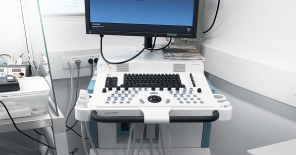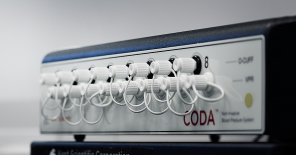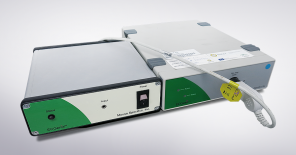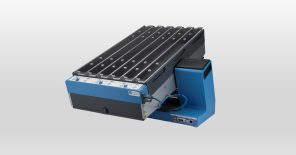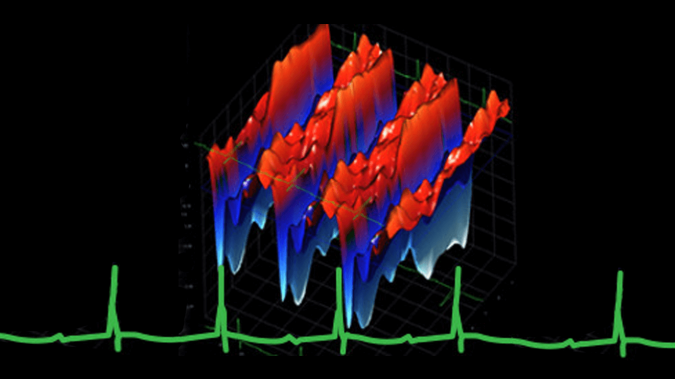
Cardiovascular
- Research associate:
- Laboratory technicians:
The unit uses a variety of non-invasive in vivo techniques for the monitoring of physiological and bioelectrical variables, including heart rate, ECG, blood pressure in conscious animals. For imaging of the animal heart and vascular system we use Vevo2100 High-Frequency Ultrasound Imaging System (echocardiography).
Standard services Echocardiography (Echo)
Echocardiography is used to monitor cardiac dimensions (chamber dimensions, thickness and valvular structures) and mechanics in vivo. For comprehensive evaluating cardiac structure and function we use standard two-dimensional B-mode, M-mode, PW Doppler and Tissue Doppler ultrasound. By using these techniques we routinely perform:
- Ultrasound assessment of cardiac function in adult mice
- Left Ventricle Function
- Systolic and Diastolic Analysis
- Quantify cardiovascular function (ejection fraction, fractional shortening)
- Right Ventricle Function
- Wall thickness
- Vessels Assessment
- Visualize vessel wall movement and vascular pathologies including atherosclerosis
- Assess blood flow through vessels and valves using Pulse Wave Doppler
- Myocardial Wall Motion
- Quantify myocardial mechanics using Strain as an early biomarker for cardiovascular dysfunction
The CPU has three scanheads:
- MS400: 28 MHz with adjustable focal length providing an axial resolution of 55 μm – used in cardiac imaging in adult mice,
- MS550S: 44 MHz with adjustable focal length providing an axial resolution of 40 μm – used in mouse vascular, abdominal, superficial embryonic imaging and small mouse cardiac,
- MS250: 20 MHz – used in cardiac imaging of larger mice and rat, and imaging of large tumors (< 23 mm).
Echocardiography is typically performed in anesthetized mice (the system contains an anesthesia device that uses isoflurane); however, echocardiography is possible to do in conscious mice as well.
Electrocardiography (ECG)
The CPU routinely performs recording of the murine cardiac electrical activity non-invasively through the animal`s paws using the ECGenie system (Mouse Specifics, Inc.). The size and spacing of disposable footplate electrodes facilitate contact between the electrodes and the paws to provide Einthoven lead II ECG in laboratory animals. For each animal, heart intervals and amplitudes are evaluated from continuous ECG recording after 5-min acclimation period. The CPU is equipped with ECG platforms and footplate electrodes of different sizes thus allowing ECG monitoring of mice and higher rodents, including newborn pups.
Blood Pressure
We provide accurate tail-cuff blood pressure measurement in mice using the CODA 8-channel High Throughput Non-Invasive Blood Pressure system (Kent Scientific). The CODA utilizes volume-pressure recording technology to detect changes in tail volume that correspond to systolic and diastolic blood pressures. Blood pressure measurements are made in conscious animals maintained in normal housing conditions with minimal handling and restraint of the animals. This reduces stress levels and physiological disturbances in blood pressure measurements over a longer period whereby data quality is improved. The CPU is equipped with two CODA systems, thus the measurement can be done on up to 16 mice or rats simultaneously. The method enables accurate blood pressure phenotyping in rodents for linkage or mutagenesis studies, as well as for drug testing experiments requiring high-throughput blood pressure measurements.
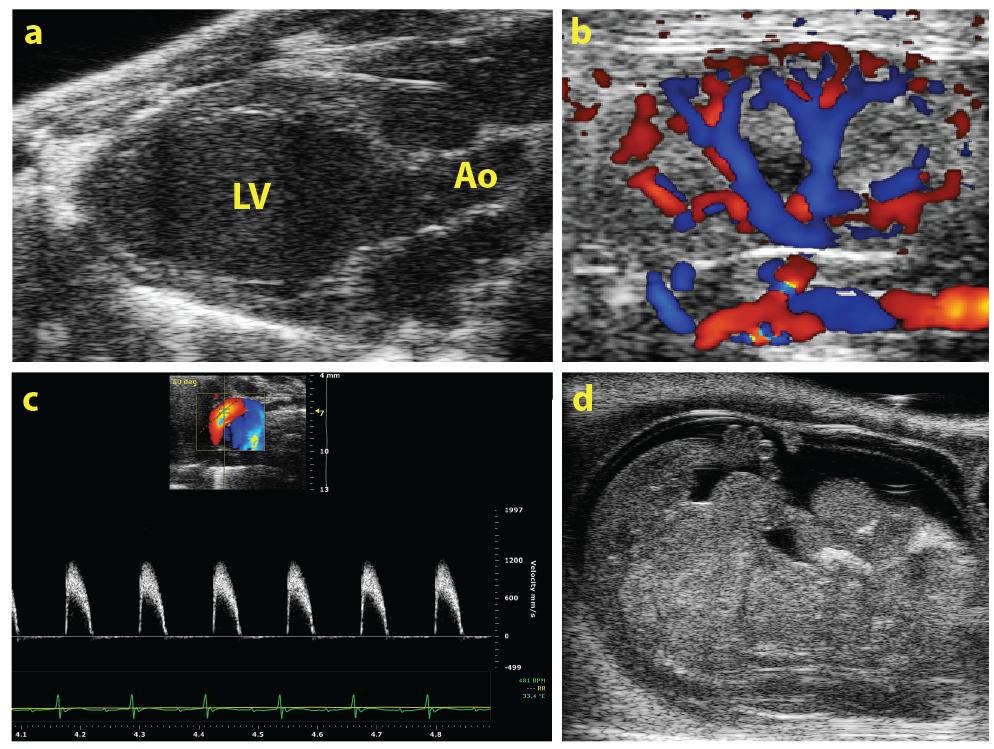
Do you have questions? Ask us
Custom services General Echography
While the central focus of the CPU is cardiovascular research, the techniques that are employed may also be useful to investigators in other fields, such as cancer, neurobiology and developmental biology. The Vevo 2100 ultrasound system allows imaging of numerous internal anatomic structures other than the heart and vascular system, namely: abdominal (kidney, spleen, liver, larger abdominal vessels), pelvic (bladder, ovaries, prostate) organs and other (e.g. eye, testes), including tumors.
Fetal Echocardiography
For developmental studies, it is possible to monitor living mouse/rat embryos in uterus and follow the development of cardiac structures as well as changes in blood flow velocities in the heart and umbilical artery. An application of high-frequency probes with conventional 2-D and pulse-wave Doppler imaging of the fetus can provide excellent information on the early development of cardiac structures. M-mode imaging further provides important functional data, although, the proper imaging planes are often difficult to obtain.
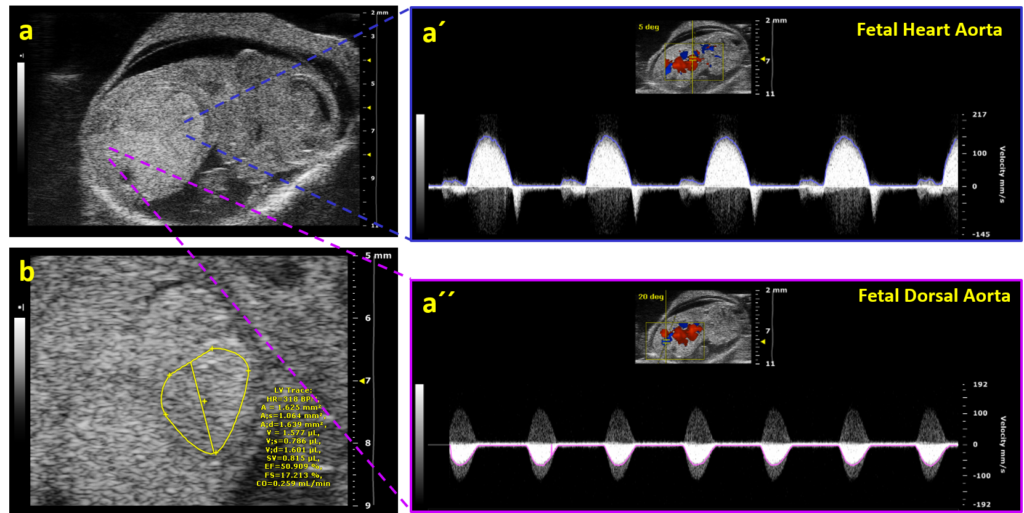
ECG on Neonatal Mice
We use a non-invasive system (LifeSpoonTM; Mouse Specifics, Inc.) to characterize the postnatal maturation of the cardiac electrical conduction system of conscious neonatal mice. The system allows to monitor ECG abnormalities in newborn animals from day 1 of their life.
Other
For many studies, multiple measurements can be coordinated with the other Units of the CCP: for example, non-invasive serial echocardiographic and blood pressure determinations during a period of high-fat feeding or other environmental stress, heart rate and ECG monitoring during challenge/stress tests, and histologic evaluation on sacrifice.
Do you have questions? Ask us
Cardiovascular unit was upgraded and expanded with the support from OP RDE project CZ.02.1.01/0.0/0.0/18_046/0015861 CCP Infrastructure Upgrade II in the years 2020 – 2022 and currently it is being upgraded from the OP JAC project CZ.02.01.01/00/23_015/0008189 Upgrade of the large research infrastructure CCP III.


